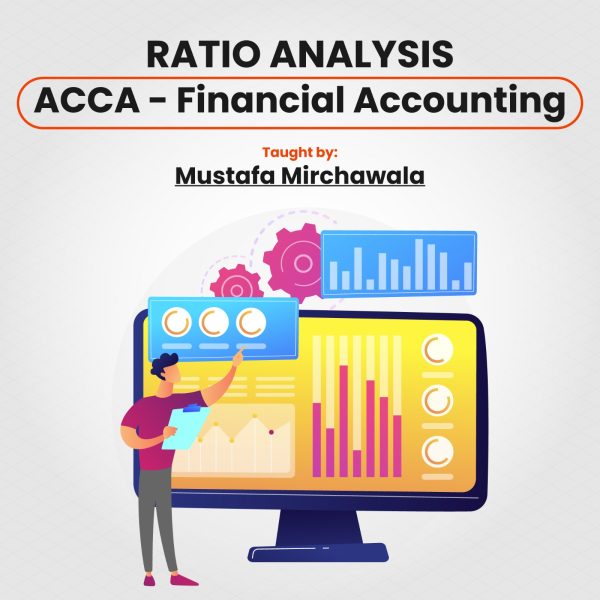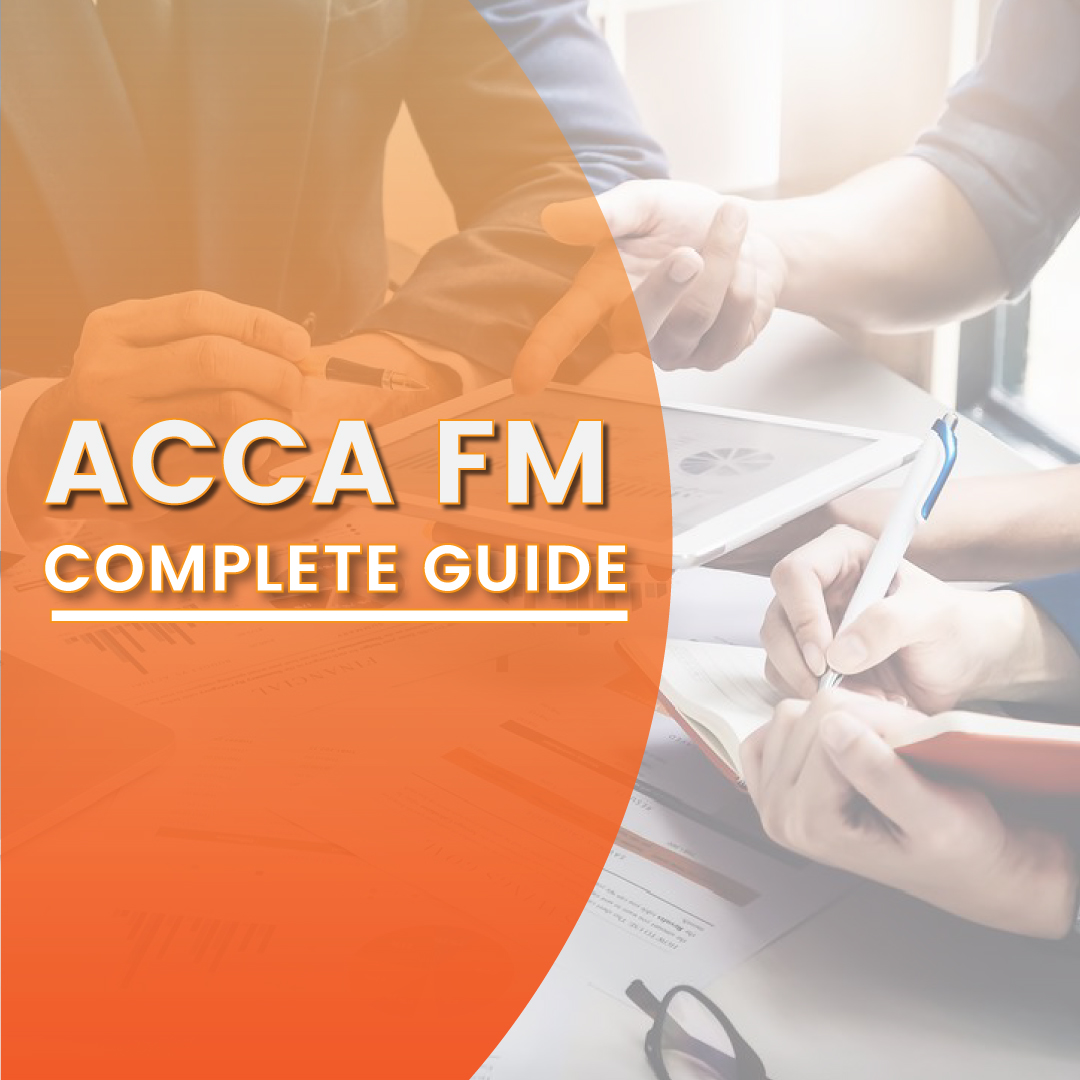Mastering Ratio Analysis for Financial Reporting- ACCA-F7
Ratio Analysis in ACCA Financial Accounting
Ratio analysis is a method of assessing a company’s operational effectiveness, profitability, liquidity via financial statements at the year-end of the financial period.

What is the Importance of Ratio Analysis?
- When analyzing a company’s performance, ratio analysis is an effective tool to compare its current and past operational years.
- It is also used to compare the company’s performance with its competitors within the same industry
- Ratios help financial analytics to plan the upcoming financial year with alterations that can enhance their performance
- Helps in assessing the financial risks involved with the firm
For whom Ratio Analysis is most useful?
- Owners/ partners/ Directors
- Investor
- Government
- Employees
- Suppliers
Profitability Ratios:
- Return on capital employed
- Gross profit margin
- Operating profit margin
- Asset turnover
- Return on equity
- Return on capital employed (ROCE):
PBIT/Capital Employed × 100
whereas, capital employed = total assets – current liabilities
Mostly ROCE is used when comparing interest rates with the previous year, or evaluating performance in the past. Moreover, this ratio is used to compare the performance of the business with the competitors in the same industry. However, certain factors need to be considered while calculating ROCE such as;
Nature of the business: This means that if we compare the ROCE of two businesses operating in different industries, it wouldn’t give a fair value of comparative performance as one industry might require more profit to be employed
Timings of Investment: The timing of investments is crucial. If a business invests towards the end of the financial year, the return on that investment may not be immediately applicable, resulting in a lower ROCE for that year.
Invest in new products/projects: Lastly, investing in new projects or products may increase the company’s total assets, which in turn increases the capital employed (denominator). When the denominator increases, the ratio will decrease, as in the case of ROCE.
Revaluation model: The upward revaluation may increase the overall assets, which will aggregate the capital employed, which will decrease the ROCE.
- GP Margin: GP/Sales × 100
- Operating profit margin: PBIT/sales × 100
- One strategy to increase the margin is to raise the selling price per unit, but it can have the opposite effect if the price is too high. In contrast, lowering the selling price per unit can enhance the margin. It’s important to note that the number of units sold does not affect the margin.
- However, the cost of sales (COS) does impact the margin. When the COS rises, the gross profit decreases, leading to a drop in the GP margin. Conversely, reducing the COS increases the GP, boosting the GP margin.
- Asset turnover is used to measure how effectively a company uses its Assets to generate revenue over its financial period. The formula is as follows:
- Asset Turnover (Times): Sales/Capital Employed
Ø Fluctuations in the selling price per unit can have an impact on the asset turnover by the law of demand. If the selling price rises, there will be a decrease in the quantity demanded, resulting in a decline in sales and a subsequent reduction in asset turnover. On the other hand, if the selling price decreases, the quantity demanded will increase, leading to a surge in sales and ultimately an increase in asset turnover.
- Return on equity: PAT/Shareholders Equity × 100
Shareholders’ equity represents the residual value of assets after deducting liabilities. It is the total amount of capital that shareholders have invested in the company. This ratio is majorly used by ordinary shareholders before investing in a new company
Long-term Solvency Ratios:
The gearing ratio is the financial ratio used to compare the owner’s equity with the amount borrowed by the company
Gearing: Non-Current Loan/ shareholders’ equity + Noncurrent loans × 100
However, there is another formula used for gearing which is known as
Debt Equity Ratio: Noncurrent loan/shareholder equity × 100
The gearing ratio serves as a financial benchmark for assessing the amount of money a company has borrowed in comparison to its owner’s equity. A high gearing ratio suggests that the company has accumulated significant debt from financial sources, which can pose a greater financial risk for investors. Conversely, a lower gearing ratio is preferred as it indicates a reduced level of risk.
How can we reduce Gearing?
- One way to reduce gearing is to issue ordinary shares for cash, this will augment the shareholders’ equity which will in return reduce the gearing ratio
- Repaying outstanding loans may reduce the gearing of the company. This may release the stress of repaying the loans and also the company may refrain from paying loan interest which is a substantial fixed cost and may elevate long-term risks.
Interest cover (Times): PBIT/ Interest expense
Interest cover is a profitability and solvency ratio, which identifies how many times and easily the company can pay the interest on its outstanding debt.
- The company with higher interest cover may perform better in the upcoming financial years due to lower financial risks.
- One way to increase the interest cover of the company is to repay the outstanding loans.
Inventory days: Closing stock/cost of sales × 365
It is the average time in days that a company takes to whirl its inventory over time
Inventory turnover (times): cost of sales/closing stock
It indicates the number of times a company turned over its inventory respective to its cost of sales. There are a few exceptions when it comes to piling up the inventory such as
- Discounts available from suppliers over bulk quantity
- Prices are inflating shortly
- Uncertain demand for goods
- Substantial purchases before year-end
Debtors Collection period: Closing debtor/sales × 365
Accounts receivable refers to the money that a company is owed by its customers who have purchased goods or services on credit.
- The lower the better it is for the company because the delay of receivable may lead to bad debts
- Cash will remain blocked during the entire period
- However, there are a few exceptions where extended days may turn out to be beneficial for the company ,While selling obsolete stock ,Bulk sales at the year-end and Marketing strategy to create an impactful perspective of the company
Creditors Payment Period: Closing creditors/ COS × 365
- Accounts Payable refers to the money that a company owes to its suppliers who sold their goods to the company on credit
- The higher the better since it indicates your company to be powerful and impactful
- The number of days can be extended through negotiations
Liquidity Ratios:
Current Ratio: Current Asset/ Current Liabilities
Acid test ratio: Current Asset – closing stock/current liability
The ability to analyse financial statements using ratios and percentages to assess the performance of organisations is a skill that will be tested in many of ACCA’s exams. It will also be regularly used by successful candidates in their future careers–Read more
Limitations of Ratio Analysis
Prior Information: The data used in the ratio analysis is former and it may represent past performance, however, it cannot necessarily reassure the performance of the company shortly
Inflationary Ramification: The analysis takes place periodically and during this time the inflation level in the country may alter hence the comparison of the company’s performance may not happen to be accurate unless adjusted with inflationary changes.
Manipulation of Financial statements: Ratio analysis is based on financial data provided by the company, but this data can be easily manipulated to improve performance, potentially leading to an inaccurate picture of the company’s true financial health.
About: It is important to note that this topic falls under the curriculum of the ACCA F3 paper, “Financial Accounting” and is taught by Sir Mustafa Mirchawala at Mirchawala Hub of Accountancy.
FAQs: Ratio Analysis in ACCA Financial Accounting
What is Ratio Analysis?
Ratio analysis is a method of evaluating a company’s financial performance by examining its financial statements at the end of a financial period.
How is Return on Capital Employed (ROCE) Calculated?
ROCE is calculated as PBIT (Profit Before Interest and Tax) divided by Capital Employed, where Capital Employed equals Total Assets minus Current Liabilities.
What Factors Affect ROCE?
Factors like the nature of the business, timing of investments, investing in new projects, and revaluation of assets can impact ROCE.
What is Gross Profit Margin (GP Margin)?
GP Margin is Gross Profit divided by Sales, expressed as a percentage. It reflects profitability after accounting for the cost of goods sold (COS).
How Can Gearing Be Reduced?
Gearing can be lowered by issuing ordinary shares for cash or repaying outstanding loans.
What is Debtors Collection Period?
Debtors Collection Period measures the average time it takes for a company to collect payments from its customers who purchased on credit.
What is Creditors Payment Period?
Creditors Payment Period measures the average time it takes for a company to pay its suppliers for goods or services purchased on credit.
What Are the Limitations of Ratio Analysis?
Limitations include using historical data, potential inflation effects, and the possibility of manipulated financial statements.
Written by Hafsa Yahya -Student at Mirchawala Hub Of Accountancy











